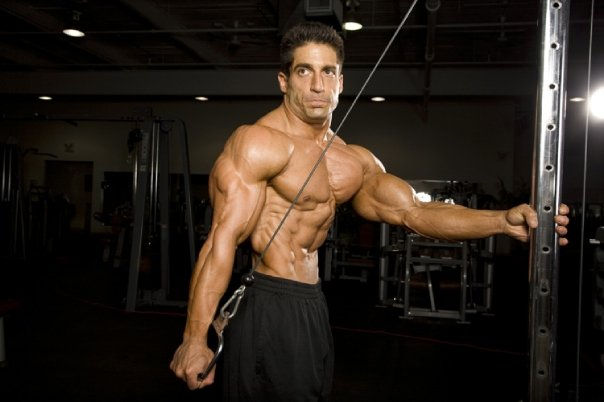
The pectoral muscles, which make up the chest, have a strong link with the triceps. They work together to make each other stronger. For example, when you do functional exercises that work your chest, they also work your triceps. This makes sense, since the hands and arms are where the will of the chest is controlled.
On the other hand, the triceps are more independent and can be worked out more easily without the pectorals. This usually happens when you work out one muscle at a time, like when you do the triceps extension. This means that most natural ways of moving that use the triceps also use the chest muscles.
The most important thing to notice here is how these two groups of muscles work together. The pectoral muscles are much bigger and usually produce much more force than the triceps. However, palmer grip width has a big effect on this.
The grip width changes which muscles are used most, the pectorals or the triceps. Or does it?
Most of the time, exercises that are done with a certain grip seem much harder. As we've already talked about, the pectoral muscles are much bigger than the triceps, so they can make a lot more force. So, grip variations that make it harder to use the chest muscles tend to be harder.
Because of the crossbridge cycle, muscles work best when they are the right length. This model combines mechanical and biochemical ideas to show that muscles make the most force when they are a certain length. If muscles are made shorter or longer than this optimal length, the amount of force they can produce can drop by a lot.
When we move our hands closer or farther apart, we change the length of the pectoral muscles and only slightly change the length of the triceps. By putting the hands closer together than the width of the shoulders, we shorten the pectoral muscles, so it makes sense that they wouldn't be able to generate force as well. This was the most popular idea for at least a while.The most common lift in the world is the bench press. In the 1960s, John McCallum wrote, "It builds the showy muscles." Also, it is the most common way to measure upper body strength, whether you are in a powerlifting competition or just want to show off to your gym buddies.
But what determines how well you do on the bench press?
When you do a bench press, your chest muscles, front delts, and triceps do most of the work.
Your chest and front delts pull on the joint in your shoulder.
Your triceps work on the joint in your elbow.
But which of these makes the most difference in your 1RM bench press? Or do they both give the same amount?
Bench Press: Triceps vs. Chest and Shoulders
In a new study from Norway, young men who worked out for fun were asked to test their bench press strength at three different grip widths.
Wide grip: 1.7 times bi-acromial distance (0.71 ± 0.06 m)
Medium grip: 1.4 times bi-acromial distance (0.56 ± 0.04 m)
Close grip: the distance between the two acromion bones (0.40 0.04 m)
Using new tools like force plates, loading cells, cameras, and motion capture software, as well as old math, they were able to figure out how much the chest and shoulder muscles and the triceps contributed to the lift at different points.
Most people think that the sticking point is the most important part of the lift. This is where most lifts fail if they are just a little bit too heavy. In this study, the sticking point was defined as the point where the barbell slows down the most after it has moved away from the chest. In this study, this was about 15–20 cm away from the chest.
Let's look at the contributions of the joint moment arms in the sticking point:
Wide-Grip Bench Press
78% is from the chest and front delts.
22% comes from the triceps.
Comments